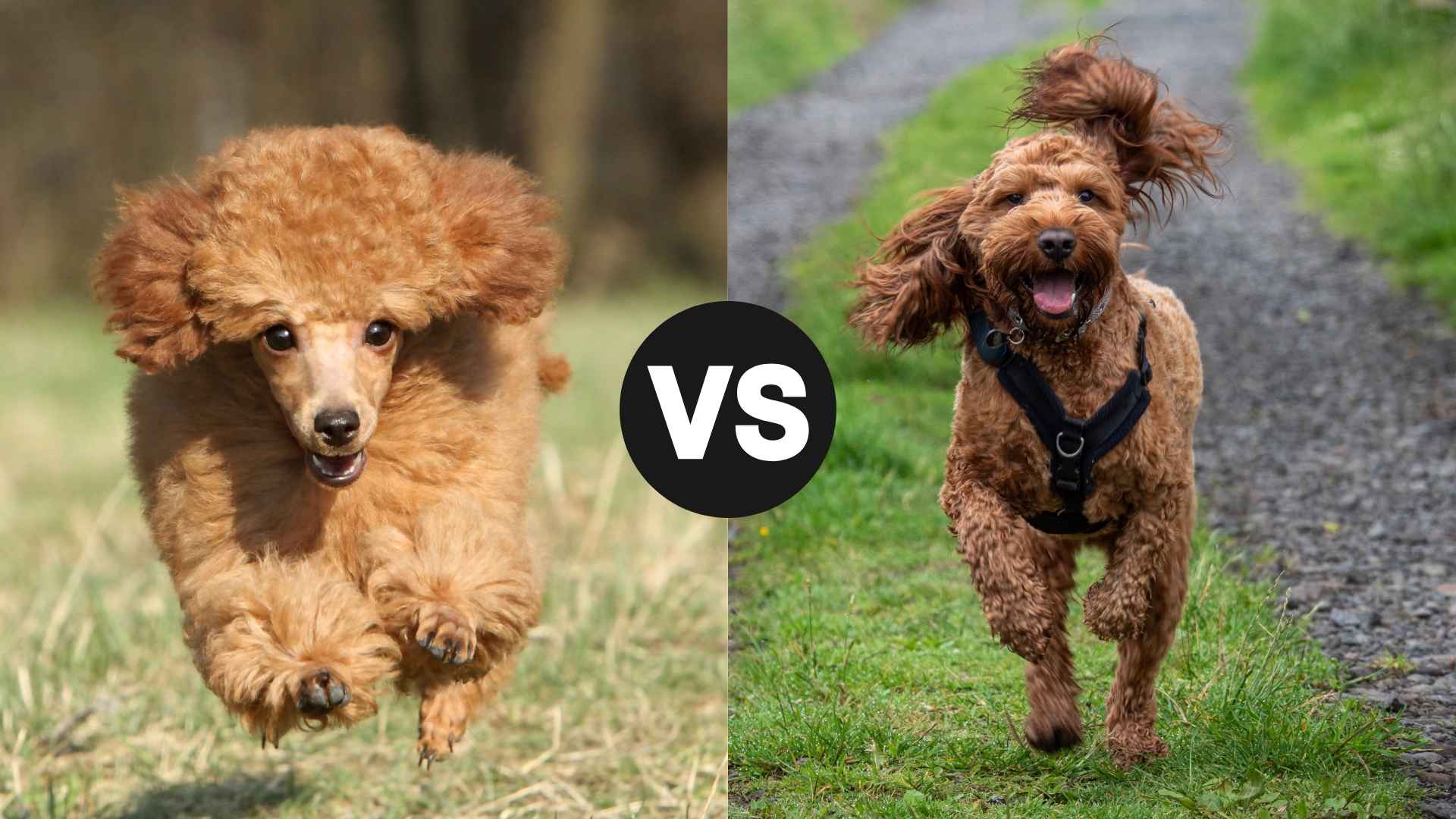Deciding between a Toy Poodle and a Cockapoo is like choosing between two adorable, curly-haired bundles of joy, each with its own charm. While they may look similar at first glance, these pups have distinct personalities and care needs that make each one unique.
The Toy Poodle is a purebred known for elegance, intelligence, and a hypoallergenic coat that rarely sheds. They’re quick learners, loyal companions, and love being the center of attention.
On the flip side, the Cockapoo—a delightful mix of Cocker Spaniel and Poodle—brings a playful, affectionate energy to any home. They’re a bit more relaxed, making them great for families and first-time dog owners.
Both breeds are small in size but big on personality. Whether you’re after a refined pup with a sharp mind or a happy-go-lucky cuddle bug, knowing the differences will help you choose the best fit for your lifestyle.
Ready to find your perfect furry match? Let’s dive into the playful showdown of Toy Poodle vs Cockapoo—two curly companions that are as lovable as they are unique.
Toy Poodle vs. Cockapoo
Toy Poodle vs. Cockapoo: Size and Physical Build
Toy Poodle
Poodles come in three distinct varieties, each differing in size, but all share similar characteristics in terms of intelligence, elegance, and trainability. The three varieties of Poodles are Standard Poodle, Miniature Poodle, and Toy Poodle.
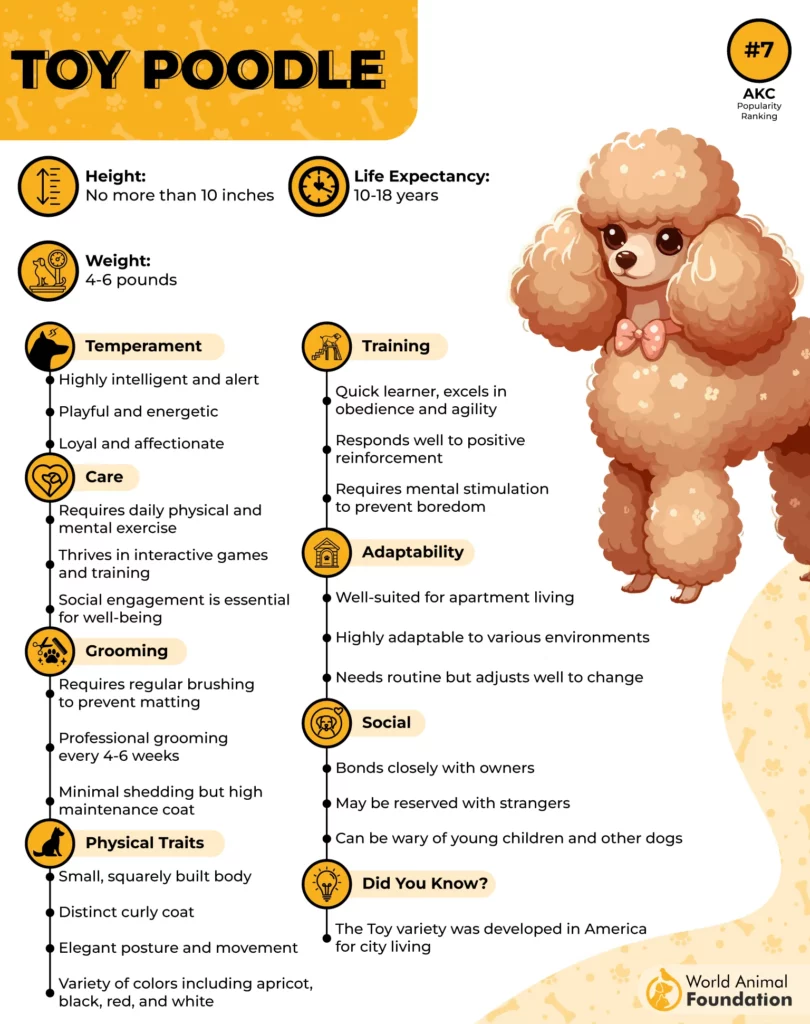
The Toy Poodle is the tiniest of the Poodle types, typically measuring 9 to 11 inches in height at the shoulder and weighing around 4 to 6 pounds. They have a slender, graceful frame with fine bones, giving them a refined and delicate look.
Toy Poodles are squarely proportioned with long legs relative to their small bodies, which adds to their graceful look. They have webbed feet, a long, refined muzzle, and an overall sleek silhouette. These mini-poodle sizes are the friendliest dogs, well-suited for apartment living and indoor companionship.
Cockapoo
Cockapoos are a designer crossbreed between a Cocker Spaniel and a Poodle, and their size can vary depending on whether they are bred with a Miniature or Toy Poodle. On average, Cockapoos stand between 10 to 15 inches tall and weigh anywhere from 12 to 24 pounds.
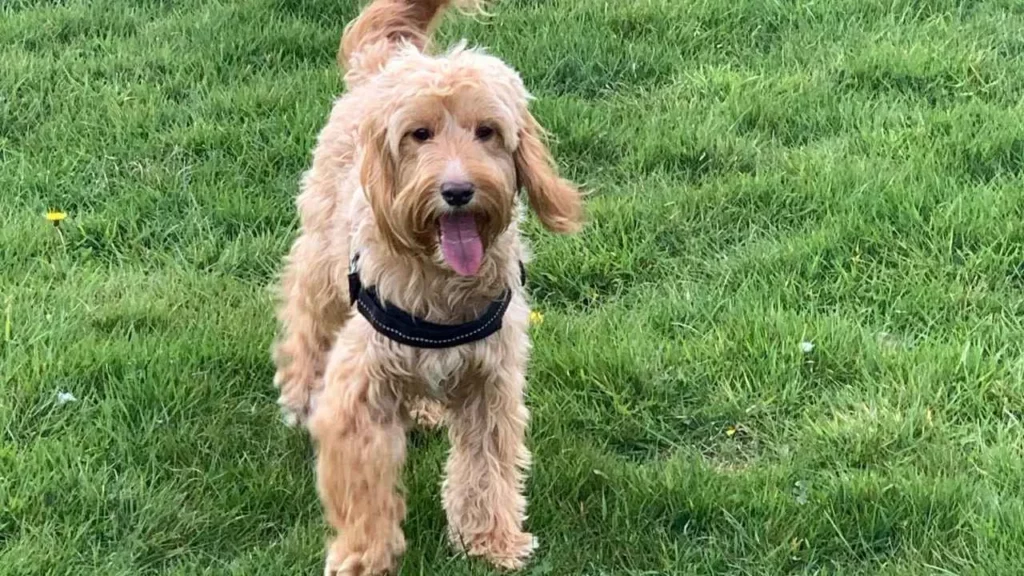
This teddy bear breed have a more robust and muscular build compared to Toy Poodles, with a rounder face and shorter muzzle that often resembles the Cocker Spaniel parent.
PetPlan notes that Cockapoos are very friendly, highly trainable, and energetic dogs. Their curly, low-shedding coats make them especially suitable for people with allergies.
Their body is compact and sturdy, making them better suited for playful activity and family interaction. Their moderate size and durable frame make them a great fit for both apartments and active households.
Toy Poodle vs. Cockapoo: Coat Type and Texture
Toy Poodle
Coat Type:
The Toy Poodle has a dense, curly coat that is often described as hypoallergenic. This means it produces fewer allergens compared to many other breeds, making it a great choice for individuals with allergies. Their coat is made up of tightly wound curls, which can sometimes form loose waves, but they are typically more tightly curled than the Cockapoo’s.
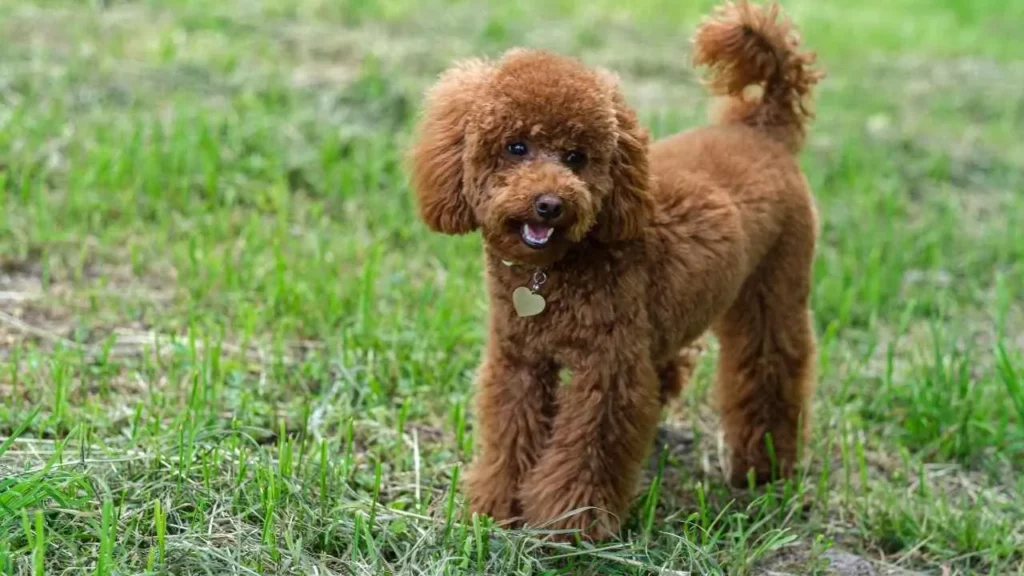
Coat Texture:
The texture of a Toy Poodle’s coat is soft and dense. It is very fine, with a luxurious feel, and the curls are springy and well-structured. This type of coat does not shed much, but it does require regular grooming to prevent matting and tangling, as the curls can easily become knotted if not cared for properly.
Cockapoo
Coat Type:
The Cockapoo is a hybrid dog, resulting from a cross between a Cocker Spaniel and a Poodle (usually a Miniature or Toy Poodle). As a result, Cockapoos can have a coat that is a mix of the Poodle’s curly texture and the Cocker Spaniel’s silky or wavy fur. Depending on the dominant traits inherited from either parent, the Cockapoo’s coat can vary.
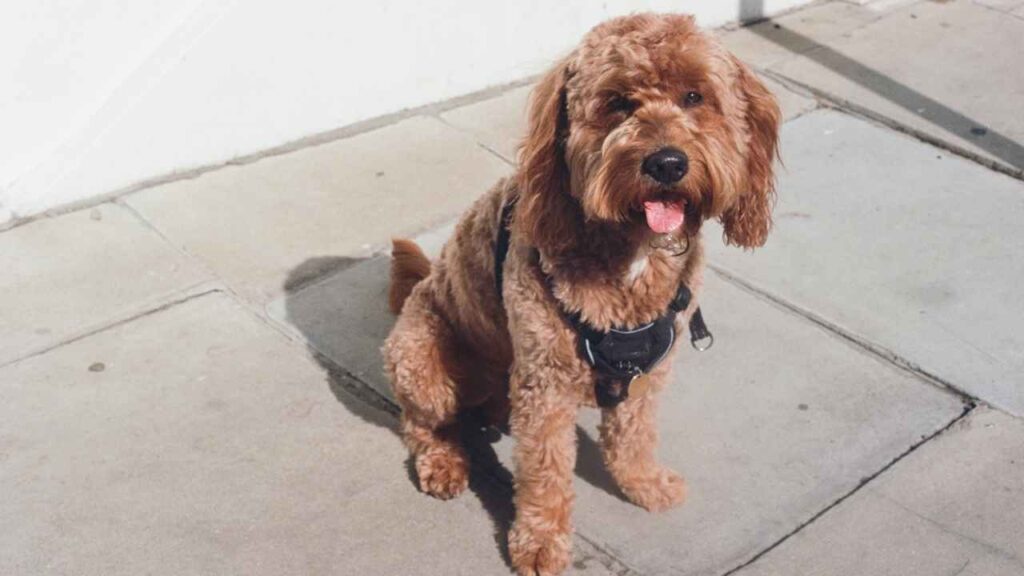
Curly Coat: If the Cockapoo inherits more of the Poodle’s genes, it will likely have a curly, hypoallergenic coat similar to the Poodle’s.
Wavy Coat: If the Cockapoo takes more after the Cocker Spaniel, it may have a wavy or loose curl texture, which can be softer and less dense than the Toy Poodle’s.
Coat Texture:
The texture of a Cockapoo’s coat is generally softer and sometimes silkier than the Toy Poodle’s coat. The curls or waves are not as tight or as springy as those of the Poodle, but the coat still requires regular grooming to prevent mats and tangles. Cockapoos with wavy coats may need a bit more brushing to keep their coats in good condition.
Toy Poodle vs. Cockapoo: Intelligence and Trainability
When comparing the Toy Poodle and the Cockapoo in terms of intelligence and trainability, both breeds are known for their high intelligence and eagerness to learn. However, there are some nuances between the two:
Toy Poodle
Toy Poodles are consistently ranked among the most intelligent dog breeds. They are highly responsive, quick learners, and can excel in obedience training.
Their intelligence makes them great for various dog sports, tricks, and even service work. They pick up commands quickly and love to learn new tricks, making training easier for first-timers.
Their natural curiosity and eagerness to please make them relatively easy to train. These energetic dogs thrive on mental stimulation and enjoy being challenged with new commands or activities.
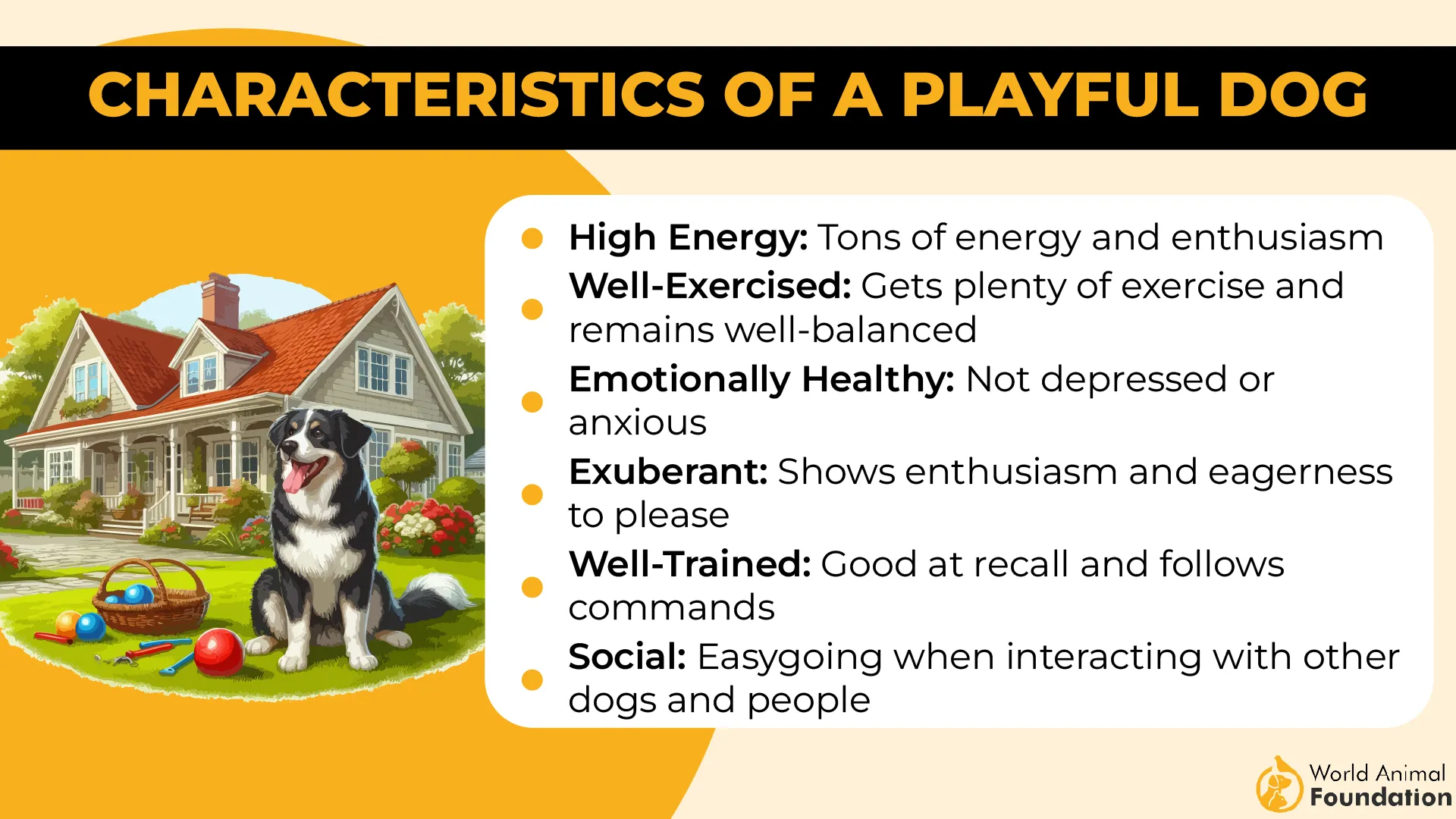
Purina states that they love to be included in all family pursuits and can be good watchdogs, announcing visitors without being aggressive. However, due to their sensitivity, they require positive reinforcement training methods, as harsh corrections can lead to confusion or stress.
Cockapoo
As a mixed breed, Cockapoos inherit intelligence from both their Poodle and Cocker Spaniel parents. They are typically very smart, especially because of the Poodle influence. They can quickly grasp new concepts and commands.
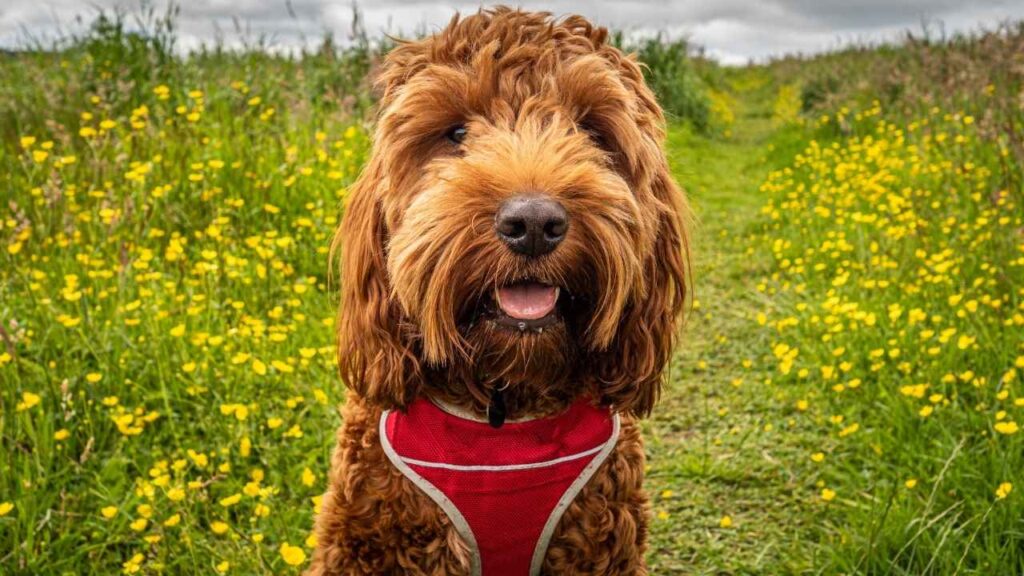
Cockapoo puppy is also quite trainable, with the Poodle side contributing to their ability to pick up training quickly. However, since they are part Cocker Spaniel, they may sometimes show a bit of independence or stubbornness.
Toy Poodle vs. Cockapoo: Grooming Requirements
When comparing the Toy Poodle and Cockapoo in terms of grooming requirements, both breeds are known for having coats that require regular care to keep them looking their best. However, there are differences due to their coat types and parentage:
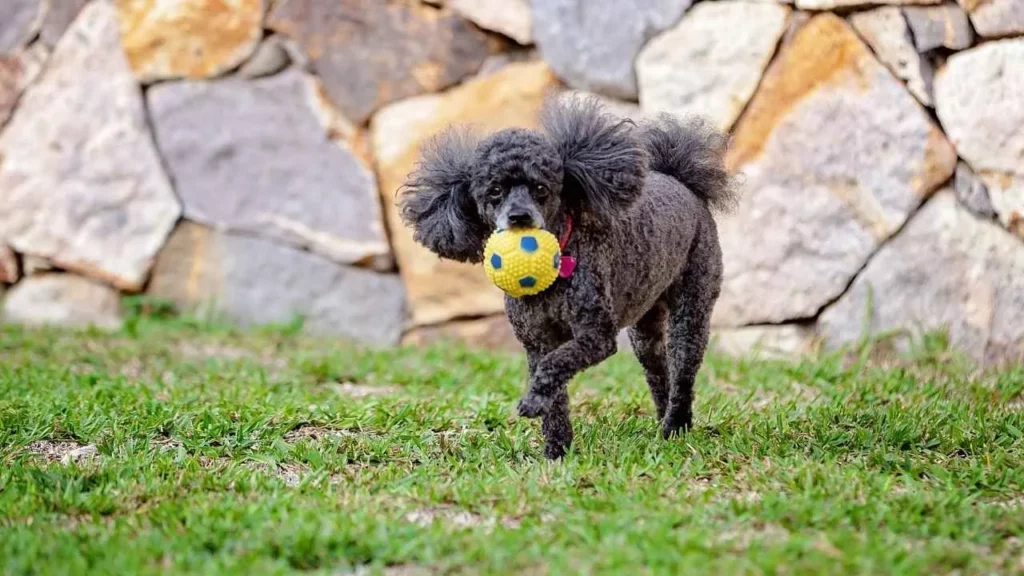
Toy Poodle:
Grooming Needs:
They need to be brushed regularly (ideally 3-4 times a week) to prevent their hair from tangling and matting.
Poodles should be bathed about once a month or as needed, but be careful not to over-bathe, as this can dry out their skin.
Regular haircuts are necessary, typically every 6-8 weeks. Poodles have a hypoallergenic coat, but this does not mean they are maintenance-free. Because their hair grows continuously, they need a trim approximately every four to six weeks, says PetMD.
Their floppy ears can accumulate wax, so they need to be cleaned regularly to prevent infections.
Poodles may develop tear stains around the eyes, so cleaning and care are important to keep them looking clean.
Cockapoo:
Grooming Needs:
Like the Poodle, Cockapoos also need regular brushing (2-3 times a week) to prevent mats and tangles, especially if they inherit more of the Poodle’s curly coat.
They should be bathed about once a month or as needed. Over-bathing should be avoided, as it can cause dry skin.
Regular trims are required every 6-8 weeks, depending on how long you keep their coat. If their coat is more like the Cocker Spaniel’s, it might require more maintenance and may be more prone to tangling.
Their floppy ears can be prone to infections and require regular cleaning to avoid the buildup of wax and moisture.
As with Toy Poodles, Cockapoos may also develop tear stains, requiring some attention to keep the face clear.
Toy Poodle vs. Cockapoo: Average Lifespan
When it comes to the average lifespan of the Toy Poodle and Cockapoo, both breeds are known for being relatively long-lived, though there are some differences.
Toy Poodle Average Lifespan
Toy Poodles typically live between 12 to 15 years, and some can even live longer with good care.
Their long lifespan is partly due to their small size, which tends to correlate with a longer lifespan in dogs. Additionally, regular veterinary care, a healthy diet, and proper exercise contribute to their longevity.
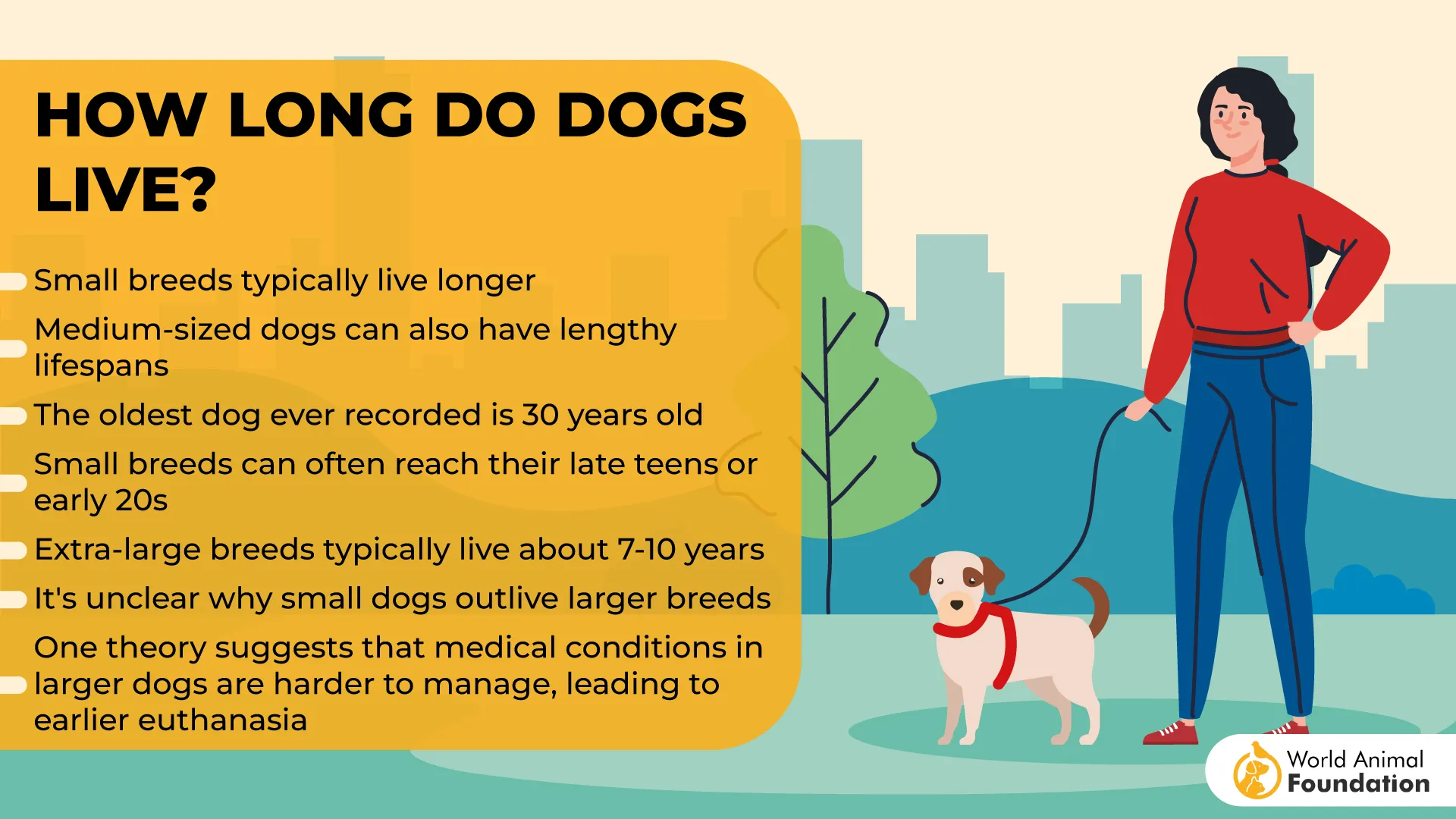
Cockapoo Average Lifespan:
Cockapoos generally live around 13 to 15 years.
Like Toy Poodles, Cockapoos are also a small breed, which typically leads to a longer lifespan. Their lifespan can vary slightly depending on whether they inherit more traits from their Poodle or Cocker Spaniel parent, as certain health issues related to each breed such as progressive retinal atrophy may influence their longevity. Regular vet visits and good care can help maximize their lifespan.
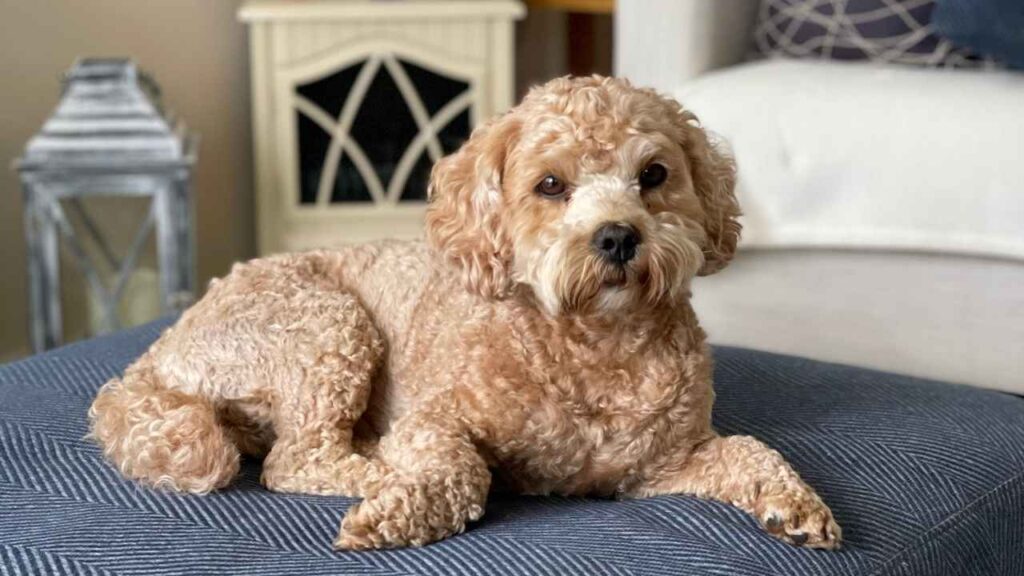
Both the Toy Poodle and Cockapoo have similar life expectancies, generally ranging from 12 to 15 years. While the Toy Poodle might slightly outlive the Cockapoo due to the influence of its Poodle genetics, both breeds are known for their long and healthy lives when properly cared for.
Conclusion
When doing the Toy Poodle and the Cockapoo comparison, it’s important to consider their backgrounds, as the Cockapoo is a popular crossbreed with the Standard Poodle parent and a Cocker Spaniel as the other. Both breeds are intelligent and have friendly temperaments, making them great choices for families and pup lovers alike.
Cockapoo owners often appreciate their pets’ playful behavior and slightly higher exercise needs compared to Toy Poodles, who are better suited for smaller spaces like a backyard or apartment. Those wondering about allergies should note that both breeds are often recommended for allergic individuals due to their low-shedding coats, but regular visits to a groomer are essential to maintain their coats. Whether you’re considering a breeder or thinking about rescue, understanding each breed’s unique traits, temperament, and exercise requirements will help you choose the best fit for your lifestyle.


